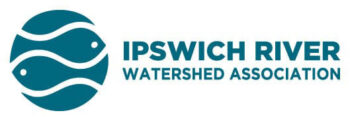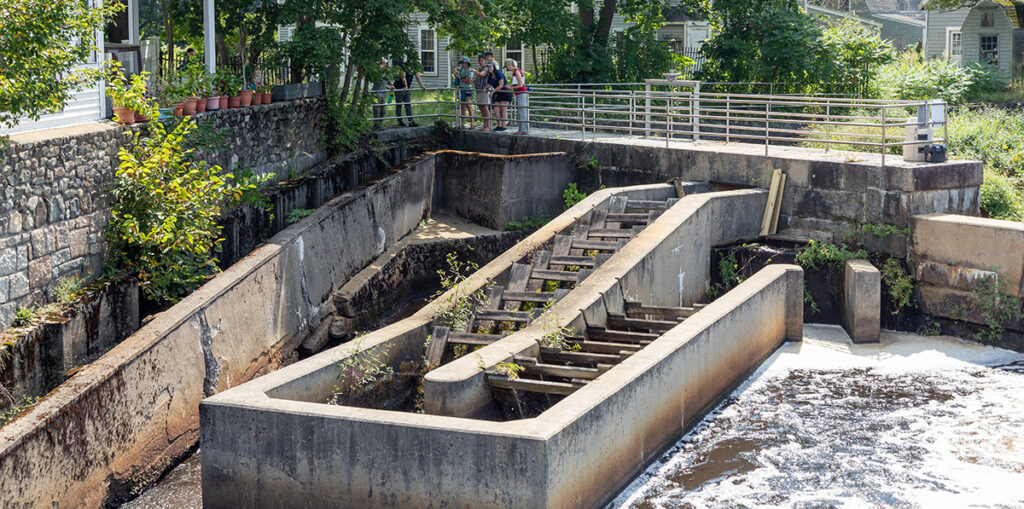It’s almost fish counting season! So let’s talk about fish – specifically herring – and the Ipswich River.
Why do we count fish?
Since 1999, the Ipswich River Watershed Association (IRWA) has organized annual herring counts. Historically, the Ipswich River supported a robust and stable population of Alewife Herring (Alosa pseudoharengus), anadromous fishes that are born in freshwater, live for two to three years in the ocean, and then return to spawn in their original freshwater spawning pond. Alewives were traditionally an economically important fish and helped to shape the culture of this region in the early 1800’s (Belding, 1921).
Since that time, a combination of factors has greatly diminished the population of herring in the Ipswich River. Dams (even with fish ladders), use of spawning ponds for water supply reservoirs, and chronic low flow periods caused by water supply withdrawals, have all served to impair herring habitat and hinder the growth of returning populations.
So the herring count is performed every year, not only at the Ipswich River, but at coastal rivers across the state. Fish count data is shared with the Massachusetts Division of Marine Fisheries (MA DMF) so they can paint a clear picture of how herring runs are performing in our region in general. This is important because herring are not just at the mercy of changing conditions in our rivers, but also our oceans, where it is much harder to pin down changes that could impact herring populations. Having a handle on how herring populations fluctuate from year to year can inform management decisions and restoration strategies.
How does the Ipswich Mills Dam impact fish?
The Ipswich Mills Dam is a significant barrier for all wildlife, especially migratory fish like alewife.The Ipswich Mills Dam is a “head of tide” dam, meaning that it prevents daily tidal fluctuations from extending further upstream. Each year when alewives are returning, they have one main goal – reach their spawning habitat. While the dam presents a hard stop to this goal, there is a fish ladder that helps fish to access the river above the dam.
However, there are still significant issues with fish ladders. First, not all fish can find and subsequently use the fish ladder. Alewives, like other migratory fish, seek passage through certain “attractant flows” that indicate to a fish “hey, come up this way!”. An ideal fish ladder creates a strong attractant flow that lures fish away from the splashing and cascading flows coming down the dam spillway. The fish ladder at the Ipswich Mills Dam does not have a particularly strong attractant flow.
Additionally, not all fish who find the fish ladder can navigate all the way through. This fish ladder is not built specifically for herring and can often present too much flow (or too turbulent of flow) for herring to easily navigate. This all goes to show that the current situation is not ideal for our fishy friends. Having the dam at this location on the river is equivalent to pulling the welcome mat off your doorstep and putting a “no solicitors” sign up.
Removing the dam would be a clear sign to migratory fish that the Ipswich River is back open for business. And believe it or not, this would have a cascading effect where we will see more fish making their way up the river than ever before. We are confident fish will return based on all the other dam removal projects in our region and beyond that saw fish come back immediately following dam removal. One compelling example comes from the Patapsco River in Maryland, where researchers found zero alewives over four consecutive years prior to dam removal. Following removal, the fish came back. There are plenty of other examples, including in Taunton and in Exeter.
Counting the number of fish that successfully navigate the fish ladder and make it past the dam is our best method at keeping tabs on our local herring population. Carrying this practice out over many years allows us to observe both long- and short-term trends and can inform decisions in fisheries restoration.
Interested in participating in the count? Volunteers sign up for 10 minute counts at the dam from April to early June. Attend our upcoming training on March 19th or email Ryan O’Donnell, Program Manager, at [email protected] for more information.

